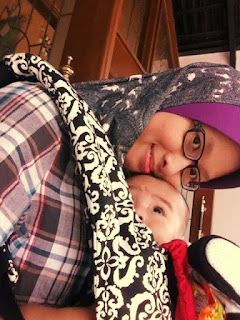nine reasons not to carry your baby facing out
Recently Catherine Fowler of Australia made a comment that parents who face their babies out are “cruel and selfish “. Actually for the record she said they were “inadvertently cruel”. I am not here to judge you ladies and gentleman; a walk around the block with your baby in the forward facing position will probably not wreak havoc on your child’s development or health. I don’t think any parent holding their little ones are cruel. But when you start to weigh in on whether your baby should maybe change perspectives and face the world head on or not, here are some reasons not to let your baby face out, for your consideration- of course.
Carrying your baby facing out…
1. Does not support your baby’s legs-
Your baby’s legs should be pulled up to at least hip level if not higher. This is possible only if the fabric in a baby carrier covers the whole back of the thigh, to the backside of the knee, or if the carrier hasfootstraps. When your baby is facing forwards with legs unsupported, it isn’t that his legs are simply dangling, his spine and hips are unsupported to and there is simply nowhere for baby to sit.
Check out this medical research by the International Hip Dysplasia Institute and the infant biomechanics in different types of baby carriers . A baby carrier that supports the legs encourages proper hip development. Front facing carriers do not support little hips. Those babies already diagnosed with DDH should steer clear of front facing carriers.
2. Makes it tough for the wearer to carry the baby-
It’s much harder to carry something that curves away from your body than something that embraces your body. The wearer has an awkward load and often ends up arching her back to compensate. Babies bodies arenaturally adapted to being carried facing you.
3. Places your baby in an arched or hollow back position which places pressure on the spine-
With no leg support and facing out this baby is unstable, forcing him to assume a hollow back position (as shown with red line) to compensate.
Extending the back (like arching after waking from a nap), is not injurious or “bad” in and of itself. The problem arises when you compress a “hollow back” under a load. Placing an infant in a front facing carrier stretches the naturally convex rounded curve (see infant spinal development in upright transport paper) of his spine into a hollow back position. With nothing to cling to, weak abdominal muscles, and retracted shoulders, the infant’s pelvis tilts backwards and is forced to not only carry weight of his own body but also to absorb the force of every step that the carrying individual takes- all on his little compromised spine.
3. Places undue pressure on groin and may chaff the inner thighs of your baby-
This baby is leaning on his dad for some extra support. Although it stabilizes him, it is less than ideal to spend the day transported in this position.
Chaffing is no fun. Being suspended by your baby’s most sensitive parts is not ideal, especially for little boys.
4. May overstimulate your baby-
Babies can face their parents and still experience the world around them and take it in at their own pace. It is very easy for a small infant to become overwhelmed.
5. Doesn’t support the head or the neck-
Positional asphyxia is possible when babies have no neck control and their chin falls toward their chests. Little babies should never be placed in a position that can compromise their airways. The US Consumer Products Safety Commission recently passed a law that the warning labels of forward facing carriers must state that babies should not face out until adequate head/neck control is achieved. The law does not extend to sleeping infants even though they don’t have control of their necks or heads while snoozing.
6. Makes thermoregulation more difficult-
The flexed position a baby assumes on his mother’s chest is more efficient at conserving heat than chest exposed. Check out kangaroo care and thermoregulation benefits. The baby also has more fat cells (insulation) on its back side than front.
7. Makes it harder to respond to baby’s cues-
With no eye contact it is harder to communicate with your baby, check their airways, see their spit up, see them rooting, practice EC, and know their needs. There’s a neat study that shows that even front facing strollers interfere with your ability to interact with and respond to your baby.
The mom is holding her son's legs trying to support them for lack of a seat. He is supported by two pieces of fabric over his groin. If it weren't for the fabric in front of his shoulders, he would fall forward. Not very supportive.
8. Throws off the baby’s center of gravity- Most often the wearer will intuitively stick out her pointer fingers for the baby to grab on to and stabilize himself or the wearer will try to support the baby’s legs by lifting them up in the front. With no seat and nothing to grab on to in front of him it is tough for baby not to arch his back under the weight of his own body.
9. May not be so wonderful on your back either-
Carrying a load with an arched spine will give you an aching lower back.
Carrying your baby facing forward is not the best option. It’s not “cruel”, but it’s not ideal either. Embracing your baby, or having them embrace you (like when you’re backin’ the baby) is what your baby is adapted to do and quite naturally the way to go.

Comments